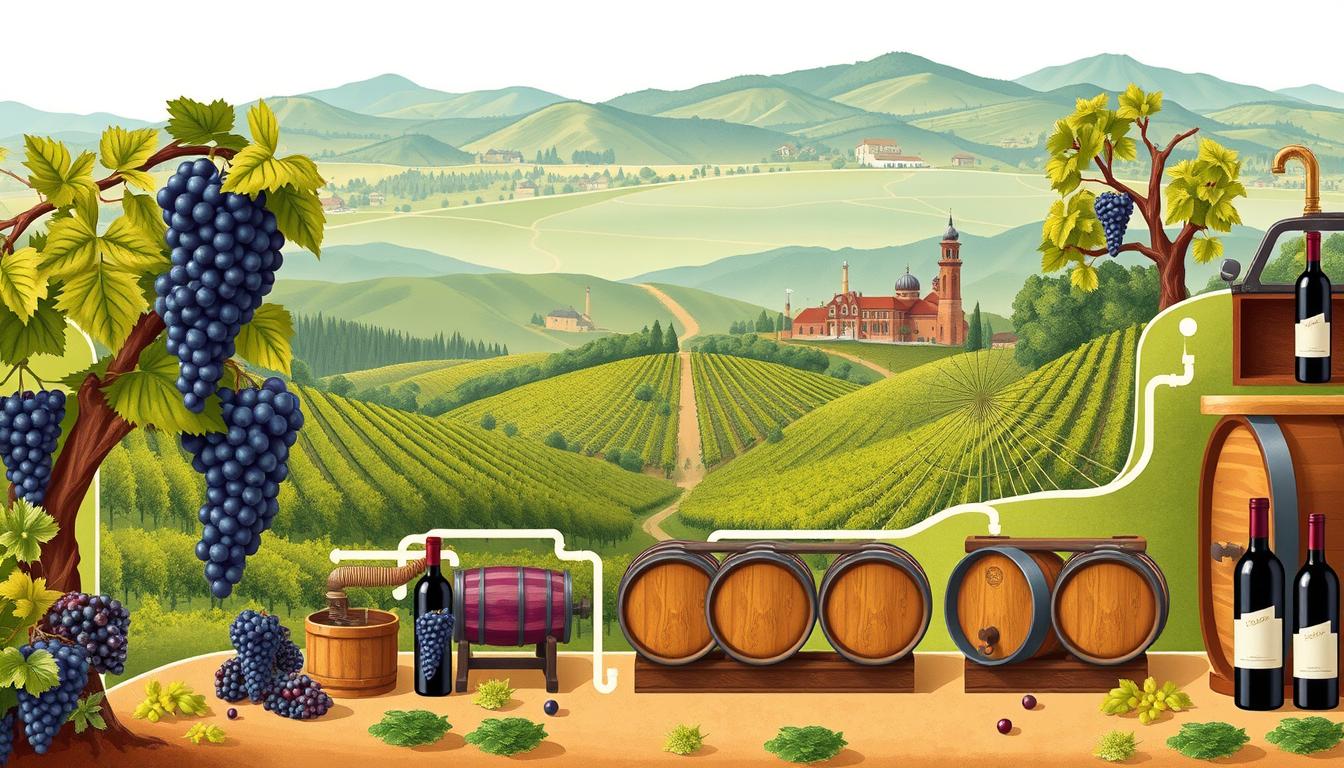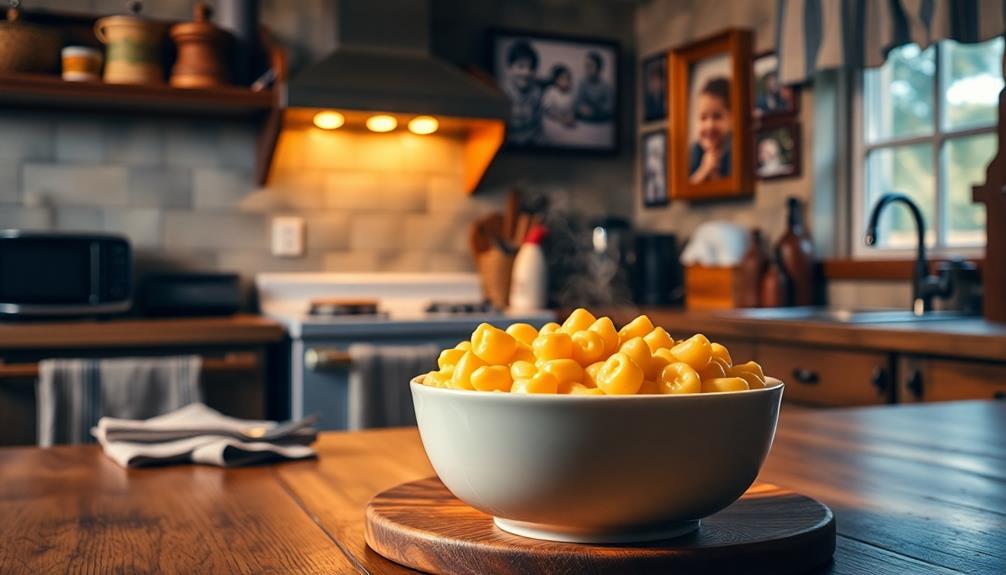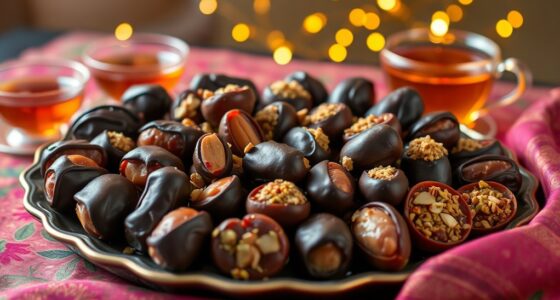Have you ever taken a moment to savor a glass of wine, perhaps during a special dinner or a quiet evening at home? That moment can be deeply reflective, as you realize it’s not just a beverage but the culmination of an intricate journey—from grape to glass. The wine production process is a fascinating blend of art and science, where each step, from the way grapes are harvested in the vineyard to the careful hand of the winemaker, plays a crucial role in crafting the final product. By understanding these winemaking steps, you’ll not only enhance your appreciation for your favorite bottles but also foster a personal connection with the entire experience.
From selecting the right grapes in unique terroirs to the meticulous vineyard processing and ultimately, the bottling process, each phase tells a story, revealing the character of the wine you hold in your hands. As we explore this journey together, prepare to uncover the nuances, challenges, and delights that shape the world of wine.
Key Takeaways
- The grape harvest season in the US typically ranges from August to October.
- Modern winemakers combine science and tasting to determine the ideal harvesting time.
- Crushing grapes has evolved to mechanical presses, improving sanitation within the wine production process.
- The fermentation period can last from ten days up to a month, depending on the intended wine style.
- Aging wine in barrels adds complexity and aromatic notes, enhancing the overall flavor profile.
- Tannin and acidity are essential characteristics that impact a wine’s taste and aging potential.
- Bottling can happen immediately or after aging, offering winemakers varied options for the final product.
The Art of Winemaking
The art of winemaking transcends mere technicality, blending tradition, passion, and innovation into every bottle. Oenology, the science behind winemaking, plays a pivotal role, as enologists meticulously oversee various stages of production. A critical factor in this process is the timing of grape harvests. Grapes must be picked when they reach physiological ripeness, ensuring optimal flavor and quality.
Modern winemakers utilize a combination of ancient principles and scientific techniques to determine the perfect moment for harvest. While mechanical harvesting is an option, most wineries favor hand harvesting, believing that it minimizes damage to the grapes, soil, and vines. This delicate touch enhances the character of the final product, reflecting the terroir—the unique environmental factors associated with a specific vineyard.
During the initial stages of winemaking, grapes undergo crushing, traditionally achieved by human feet. Nowadays, mechanical presses handle this task efficiently, extracting juice while preserving integrity. Winemaking techniques also include fermentation, governed by yeast transforming sugars into alcohol. This transformative stage varies in duration, generally lasting from 10 days to a month, with alcohol levels fluctuating from 10% in cooler climates to 15% in warmer areas.
Sweet wines require careful management, sometimes interrupting fermentation to retain some residual sugar. Following fermentation, clarification processes like fining utilize substances such as clay or egg whites to remove any solids, enhancing clarity and brightness. The final steps involve bottling the wine or allowing it to age in diverse containers, including large wooden barrels or stainless steel tanks, contributing to the wine’s overall flavor profile.

| Winemaking Techniques | Description |
|---|---|
| Hand Harvesting | Manual collection of grapes to prevent damage, often using one- or two-ton bins. |
| Mechanical Pressing | Modern method of crushing grapes, allowing for efficient juice extraction. |
| Fermentation | Yeast converts grape sugars to alcohol over a period of 10 days to 4 weeks. |
| Fining | Clarification process that removes solids using natural agents like egg whites. |
| Maturation | Aging in tanks or barrels, influencing flavor and character over several months to years. |
Each step in the winemaking process highlights the intricate dance of art and science. With attention to detail and respect for tradition, winemakers create exceptional wines that tell a story, inviting you to explore and appreciate every sip.
Viticulture: The Foundation of Quality Wine
Viticulture serves as the backbone of quality wine production. This essential practice involves the careful cultivation of grapevines, focusing on specific factors that influence grape characteristics and quality. The selection of grape varieties tailored to thrive in particular climates and soil types plays a crucial role in successful grape growing.
Optimal grape cultivation occurs within a yearly temperature range of 10°C to 20°C (50°F to 68°F). For red grapes, warm summer days with average temperatures around 21°C (70°F) are ideal. White grapes tend to flourish at slightly cooler conditions, around 19°C (66°F). Understanding these temperature needs enhances the ability to produce high-quality wines.
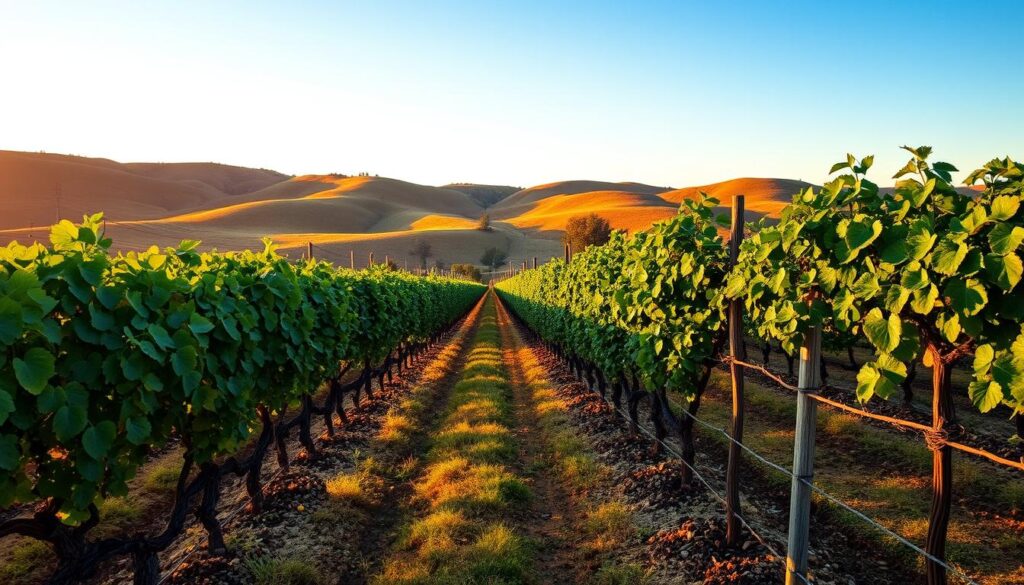
Moreover, vineyards are often strategically positioned near rivers or on south-facing slopes to maximize sunlight exposure, promoting heat absorption. Soil quality is equally vital, as it influences water drainage, root health, and nutrient availability. Interestingly, grapevines flourish in less fertile soils, which lead to richer and more complex grape flavors.
- Pruning techniques help manage vine growth.
- Canopy management ensures optimal fruit quality.
- Effective pest control protects the health of crops.
With over 10,000 grape varieties cultivated globally, only a few are predominant in wine production. Popular selections such as Cabernet Sauvignon, Chardonnay, Merlot, and Pinot Noir contribute significantly to the landscape of quality wine production.
Sustainable viticulture practices, like organic farming and the integration of renewable energy sources, are gaining traction as environmental concerns grow. The timing of the grape harvest heavily influences flavor profiles and structural attributes of the wine, affecting acidity and sugar levels.
The role of a viticulturist becomes increasingly important, as they make key decisions regarding vine training, canopy management, and soil health. These choices significantly affect grape quality and, subsequently, the final wine product. Terroir, defined as the unique interaction of climate, soil, and terrain, imparts distinct characteristics to wines from varying regions.
| Factor | Influence on Grape Growing |
|---|---|
| Temperature | Optimal range of 10°C to 20°C for healthy growth |
| Soil Quality | Affects root health and nutrient availability |
| Sunlight Exposure | Foundational for ripening grapes and enhancing flavor |
| Harvest Timing | Determines acidity and sweetness balance in wine |
Vineyards, Terroirs, and Grape Varieties
The world of wine is deeply intertwined with the concepts of vineyards, terroir, and grape varieties. Terroir specifically encompasses the unique environmental conditions that shape the character of grapes cultivated in a vineyard. This includes elements such as soil composition, climate, and even microclimates, which all play a pivotal role in defining a wine’s flavor profile.
Climate is a significant factor affecting grape ripening. Warmer conditions generally produce riper grapes, while cooler climates tend to enhance acidity, resulting in a distinct flavor profile. Each vineyard displays its own terroir, distinguishing it from broader climatic patterns, which allows for unique wine identities and varietal expressions.
Terrain, characterized by the physical landscape and topography, also contributes to this unique identity. Consequently, the interplay of these environmental factors shapes the wines’ flavors, mouthfeel, balance, and complexity. Many wine regions, such as Washington and Oregon, are known for producing exceptional wines that reflect their local terroir, exemplified by grape varieties like Pinot Noir and Cabernet Sauvignon.
To capture the essence of their terroir, winemakers implement practices aimed at enhancing the purity and complexity of flavors. Techniques like gentle pressing in white wines help maintain clarity, while hand-harvesting preserves the quality of grapes by minimizing bruising. Such meticulous care ensures the final product truly represents the characteristics of its origin.
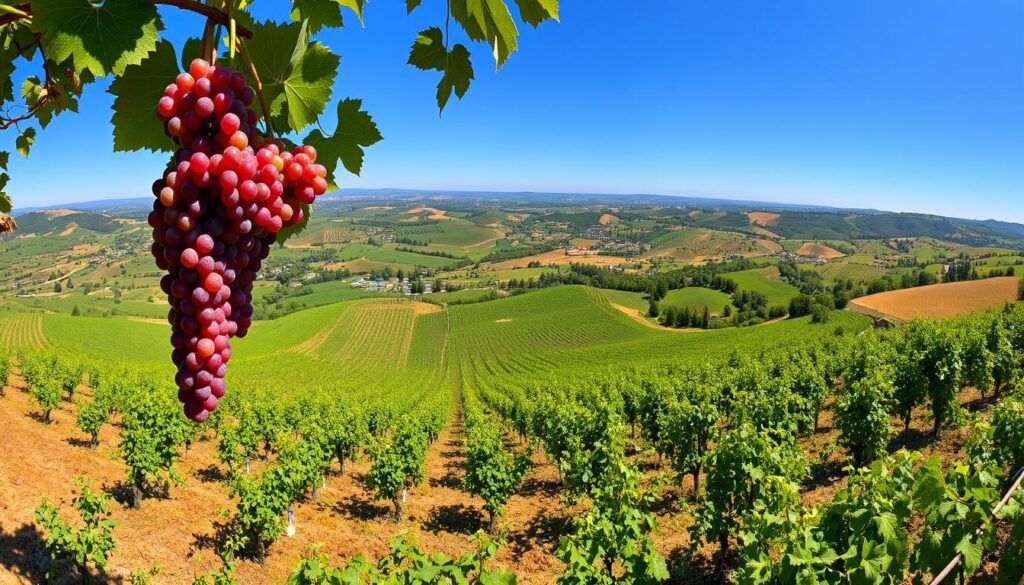
| Factor | Impact on Wine |
|---|---|
| Soil Composition | Affects flavor and aroma profiles |
| Climate | Influences grape ripening and acidity |
| Terrain | Shapes wine complexity and aging potential |
| Grape Variety | Contributes to wine’s varietal expression |
Understanding the intricate relationships between vineyards, terroir, and grape varieties enables you to appreciate the rich diversity of wines available today. Each bottle tells a story rooted in its environmental heritage, making wine tasting a truly unique experience.
Grape Harvesting Methods
Grape harvesting marks a crucial phase in the winemaking journey. You can choose from various grape harvesting methods, with the two primary techniques being hand-picking grapes and mechanical harvesting.
Hand-picking grapes allows for a meticulous selection process. This method ensures that only the ripest and healthiest grapes are harvested. Winemakers appreciate this attention to detail since it greatly enhances the overall quality of the wine produced. While this method can be more labor-intensive, it provides a level of control that often results in a superior product.
On the other hand, mechanical harvesting offers significant advantages for larger vineyards. It is known for its speed and cost-effectiveness, making it suitable for producers aiming to optimize their operations. Though this method can capture grapes quickly, it may necessitate additional sorting later to ensure quality, as not all harvested grapes are ideal for winemaking.
The timing of the harvest remains essential regardless of the chosen method. Grapes picked at the right level of ripeness contribute significantly to the wine’s flavor profile. For example, Jordan Chardonnay grapes are harvested at lower sugar levels to maintain bright acidity and fresh stone fruit flavors. Similarly, Jordan Cabernet Sauvignon grapes are gathered early in the morning, allowing for rapid initiation of fermentation.

After the grapes arrive at the winery, their weight is recorded in bins. This practice is crucial for maintaining accurate production records. Each harvesting method serves its unique purpose, offering winemakers the flexibility to create exceptional wines that reflect their vision and the characteristics of their grapes.
Wine Production Process: From Grape to Glass
The journey of wine from grapes to bottle begins with crucial steps that determine the final product’s quality and character. This process includes destemming and crushing, which play an essential role in preparing the grapes for fermentation. Additionally, understanding the use of sulfur dioxide during this phase helps ensure that the wine remains free of spoilage.
Destemming and Crushing
Destemming involves removing the stems from the harvested grapes before crushing grapes, which is vital for the winemaking process. This practice allows for the extraction of juice while significantly influencing the wine’s flavor and texture. When crushing grapes, especially red varieties, the juice mingles with the skins, setting the stage for a rich color and robust tannins.
The Role of Sulfur Dioxide
Adding sulfur dioxide during the earlier stages of wine production is crucial. This compound serves to inhibit unwanted microbial growth and limit oxidation, helping the wine maintain its freshness and integrity. By controlling these factors, winemakers can ensure a higher quality product, making the use of sulfur dioxide an integral part of the wine production process.

Fermentation Techniques Explained
Fermentation stands as a pivotal moment in the winemaking journey, where the transformation of grape juice occurs. You will explore crucial fermentation techniques that develop the essence of your favorite wines. Understanding these processes is vital for appreciating the complexity and depth achieved in each bottle.
Alcoholic Fermentation
Alcoholic fermentation is a process where yeast converts sugars found in grape juice into alcohol and carbon dioxide. This phase typically lasts between five to fourteen days. Yeast, particularly the widely utilized Saccharomyces cerevisiae, plays an essential role in determining the wine’s flavor profile and aroma. Factors such as temperature and the strain of yeast used can significantly impact the final product. White wines usually ferment at temperatures between 18–20 °C, while the fermentation of red wines occurs at higher temperatures, ranging from 20–30 °C.

Understanding Malolactic Fermentation
Malolactic fermentation serves as a secondary fermentation process, particularly noted in red wines. In this stage, malic acid is converted into lactic acid by specific bacteria, leading to a softer mouthfeel and buttery flavor in the finished wine. This technique can take weeks to months, depending on various factors including the type of wine and environmental conditions. Utilizing malolactic fermentation can enhance the complexity and smoother characteristics of wine, making it a popular choice among winemakers.
| Fermentation Technique | Definition | Typical Duration | Impact on Wine |
|---|---|---|---|
| Alcoholic Fermentation | Yeast converts sugar into alcohol and carbon dioxide. | 5 to 14 days | Determines flavor, aroma, and alcohol content. |
| Malolactic Fermentation | Bacteria convert malic acid into lactic acid. | Weeks to months | Softens acidity, adds buttery notes. |
| Carbonic Maceration | Whole grapes ferment without added yeast. | A few days to weeks | Produces fruity flavors and lighter tannins. |
Through mastering these fermentation techniques, winemakers craft wines that resonate with distinctiveness and character. Each method contributes uniquely to the wine’s profile, making it essential to understand their roles for a holistic wine experience.
Maturation: Aging Wine for Quality
Maturation is a vital stage in the winemaking process where aging wine transforms, allowing flavors and aromas to develop beautifully. This period of wine maturation can last anywhere from 6 to 24 months, depending on the type of wine produced. Various factors influence the timeline, including alcohol concentration, acidity, and tannin levels, especially in red wines.
Many wines benefit from the use of oak barrels during this phase. These barrels contribute distinct flavors, such as vanilla and spice, while also enhancing the wine’s complexity. Consumers notice substantial flavor changes, making oak barrels a preferred choice in creating quality wines. During maturation, red wines evolve in color from vibrant purple to deep ruby and eventually to brick hues. This visual transformation reflects the wine’s deepening character.

White wines also undergo significant changes during aging. They shift from greenish-yellow or straw-yellow to richer golden or amber tones. Wines like Cabernet Sauvignon and Merlot are particularly noted for their aging potential, developing an aromatic palette that captivates the senses. On the other hand, varietals such as Sauvignon Blanc and Chardonnay showcase refined characteristics through careful aging.
As market trends indicate, the demand for aged wines continues to grow globally, with renowned regions like La Rioja seeing an increase in the production of these wines. In 2012, out of every 100 bottles sold in this region, 55 were aged wines. This preference for aging wine mirrors the consumer perception of quality tied to oak barrel maturation. With France leading the way in profitability from winemaking, the appreciation for well-aged wines is stronger than ever.
| Wine Type | Maturation Duration | Color Change | Aromas Developed |
|---|---|---|---|
| White Wine | 2-3 years | Greenish-yellow to Golden | Floral, Stone Fruit |
| Red Wine | 5+ years | Purple to Ruby to Brick | Spicy, Berry, Earthy |
Choosing the right aging wine can intensify your appreciation of the complexities involved in winemaking. Each sip from a well-matured bottle reveals the artistry behind its production, providing a delightful experience that reflects the care and attention given throughout the wine maturation process.
Wine Blending Procedures
The art of blending is integral to creating unique and flavorful wines. Almost all wines consist of various blends, whether combining different grape varieties or batches from distinct vineyards. This complexity allows winemakers to fine-tune the final wine composition, resulting in a product that reflects their vision and expertise.
Winemakers typically begin by creating a ‘base blend,’ which serves as the foundation for the wine. Crafting this blend can be an extensive process; it is not uncommon for winemakers to experiment with 60 to 70 different blends before settling on a final one. Techniques during this stage involve the careful use of pipettes and graduated cylinders to form small, 100-milliliter sample blends. This meticulous approach to blending techniques allows for a detailed assessment of flavor profiles and balance.
Timing plays a crucial role in wine blending procedures. For instance, Kevin White from Kevin White Winery often blends some wines immediately after fermentation, while others may not be blended until six months later. In contrast, Mike Macmorran of Mark Ryan Winery typically waits 14 months post-harvest. These varying timelines emphasize the winemaker’s strategy and the quality of the final result.
A unique consideration in wine blending is the interaction between blends. Chris Peterson of Avennia points out that combining two soft wines can yield a significantly tannic result, whereas blending two tannic wines might lead to a velvety smooth wine. This highlights the importance of tasting and reevaluating potential blends to determine the best combinations before finalizing the composition.
Once the final blend is established, individual barrels are combined into a blending tank for additional aging prior to bottling. This additional aging ensures that the blend melds well together, developing desirable flavors and aromas. The overall process showcases the attention to detail that goes into creating a remarkable wine experience.

| Winemaker | Blending Timing | Notes on Blending Techniques |
|---|---|---|
| Kevin White | Immediately after fermentation or 6 months post-harvest | Focuses on timely blends to capture fresh flavors |
| Mike Macmorran | 14 months after harvest | Allows for longer individual part tasting |
| Chris Peterson | Varies based on wine characteristics | Points out interactions between different blends |
The Bottling Process of Wine
The bottling process of wine includes several critical steps designed to preserve quality until the bottle reaches your hands. Initially, the wine undergoes a clarification period, typically lasting a minimum of three months for red wines, while six to twelve months is optimal for the best results. This timeline allows for any remaining sediments to settle, ensuring a clearer wine that presents well in the bottle.
Once clarified, it’s essential to filter the wine to eliminate larger suspended particles, followed by a rough filtration and sterile filtration. This creates a stable end product ready for filling. In the next phase of wine bottling, bottles are meticulously rinsed with sterile filtered water to avoid introducing any foreign contaminants.
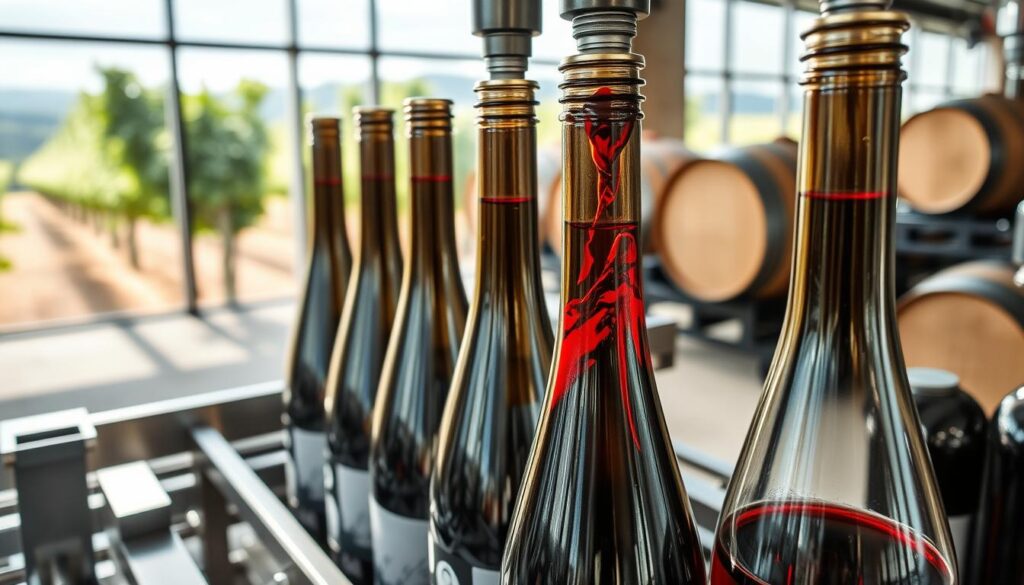
During the bottling process, you want to minimize oxygen exposure. This step is critical in controlling Total Packaged Oxygen (TPO), as oxidation can adversely affect the wine’s flavor and integrity. Various bottle fillers, such as siphon valves or vacuum fillers, assist in this process, with options ranging widely in price from less than $5 to several hundred dollars.
When it comes to closures, you can choose between corks and screw caps. Each option has unique benefits. For instance, special precautions like vacuum pulling or inert gas purging are implemented when corking wines to prevent oxygen ingress. Quality corks help maintain freshness, while screw caps provide a more consistent seal. You’ll notice sparkling wines require an additional step, where wire hoods secure the corks to handle pressure during fermentation.
- Clarification Period: 3 to 12 months
- Filtering Process: Rough and sterile filtering
- Bottle Preparation: Rinsing with sterile water
- Minimizing Oxygen: Control Total Packaged Oxygen
- Closure Options: Corks vs. screw caps
Labeling follows as the final step in the bottling process, providing vital information about the wine. Crafting an appealing label design can significantly impact shelf appeal and marketing success. Ultimately, the entire wine bottling process is pivotal in ensuring that the wine you enjoy delivers the intended experience, preserving its unique characteristics from vineyard to glass.
Cellar Storage Practices
Implementing effective cellar storage practices is essential to ensure your wines age gracefully and maintain their quality over time. The right combination of temperature and humidity creates ideal wine aging conditions, preserving the integrity of your collection.

Maintaining a consistent temperature around 55°F is crucial for optimal wine storage. Temperatures falling below 45°F can halt the aging process entirely, while bottles stored in extreme heat may spoil prematurely. The humidity level should ideally range between 60-65% to protect corks from drying out and keep labels intact.
- Proper insulation is vital; walls should have a minimum R-value of 19.
- Ceilings ideally reach an R-value of 30.
- Ensure dedicated circuits for cooling systems to maintain stable conditions.
- Use UV-blocking measures for all glass surfaces to protect your wine.
| Storage Factor | Optimal Condition |
|---|---|
| Temperature | 55°F (13°C) |
| Humidity | 60-65% |
| Minimum Temperature for Aging | 45°F |
| Maximum Humidity Consideration | 80% |
Using horizontal bottle storage is recommended for long-term aging, which helps maintain the cork seal and promotes even sediment distribution. Implementing an inventory management system aids in organizing your cellar, while FIFO (first in, first out) and LIFO (last in, first out) methods help maintain freshness.
By adhering to these cellar storage practices, you can create an environment that not only preserves your wines but also enriches your tasting experience over time.
Exploring Wine Labeling Regulations
Understanding wine labeling regulations is essential for both producers and consumers alike. These laws ensure that the information presented on wine labels is clear and accurate, aiding in transparency and consumer protection. Each label must disclose critical information, offering insight into the wine’s origin and production quality.
A typical wine label contains various elements, including:
- Producer Information: The name and location of the producer provide vital information about the wine’s origin and reflect its quality standards.
- Grape Varietal: The primary grape variety used in production often appears on the label, giving an idea of the potential flavor profiles and acidity levels.
- Appellation or Region: Geographical details indicate where the grapes are cultivated, as well as the specific winemaking regulations that may apply.
- Vintage or Non-Vintage (NV): The vintage year signifies when the grapes were harvested, which can significantly influence the wine’s characteristics.
- Alcohol Content (ABV): This percentage represented on the label informs consumers about the alcohol level, helping them anticipate the wine’s body and intensity.
In the United States, the Alcohol and Tobacco Tax and Trade Bureau (TTB) regulates these wine labeling standards, ensuring that producers adhere to established guidelines. Certification labels such as organic, biodynamic, and sustainable highlight practices that resonate with environmentally conscious consumers. Vegan certification indicates that no animal-derived products were used in the winemaking process, appealing to those following plant-based diets.
To illustrate how these regulations impact consumer choices, refer to the table below:
| Label Element | Importance |
|---|---|
| Producer Information | Informs about origin and quality standards |
| Grape Varietal | Reveals potential flavor profiles |
| Appellation or Region | Indicates location and applicable regulations |
| Vintage | Specifies harvest year affecting characteristics |
| ABV | Affects richness and flavor intensity |
| Organic/Biodynamic/Sustainable Certification | Reflects commitment to eco-friendly practices |
| Vegan Certification | Confirms absence of animal products |
As you explore the labels of various wines, note how the detailed information aligns with the wine law and labeling standards in your region. Recognizing this information empowers you to make informed choices, enhancing your overall wine experience.

Conclusion
Understanding the wine production process summary helps you unlock the fascinating journey of this cherished beverage. With roots dating back to approximately 5000 BC, viticulture has evolved into an intricate blend of science and art, drawing you into the world of winemaking insights. Every sip tells a story, shaped by terroir, climate, and the skilled hands of vintners.
This comprehensive exploration of key steps—growing and harvesting, crushing and pressing, fermentation, clarification, and aging—reveals how these elements contribute to the unique character of each bottle. You’ll deepen your appreciation of wine as you recognize the significance of factors such as grape maturity, climate impact, and fermentation nuances, turning each tasting experience into an opportunity for discovery.
Next time you raise a glass, remember the craftsmanship that goes into creating the wine you enjoy. By appreciating the complexities behind this ancient tradition, you not only enhance your enjoyment but also develop a deeper connection to the rich heritage of winemaking that spans centuries.
